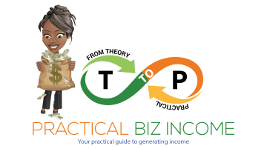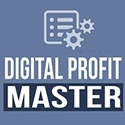If you don’t know how to tell your own story, and you’ve been doing business online for any amount of time, indeed, you are familiar with the phrase “know, like, trust”. That’s the goal online entrepreneurs desire to achieve with their ideal audiences. For that, you need credibility.
The best way to create credibility lies in two simple actions:
- Think of your website as your “story”.
- Live your story in social networks, media, YouTube videos, articles, guest spots, and live venues.
But there’s one key point here: when you know how to tell your own story, it must mirror your ideal customers or clients.
Show them you understand their challenges and can provide what they have trouble providing.
In other words, both customers and clients must be able to relate.
If you go back to our first article, The First Step Toward Credibility for Communication Types in Business, where you thought of a professional that you connected with instantly after reading an article or a post on their website, that is most likely the reason – you found yourself saying: “It’s as if she was talking about me!” or, “Yes! That’s what I’ve been trying to tell people I’m having trouble with!”
The best way to give your story credibility is to be authentic.
Just tell it like it is. Then edit out anything that doesn’t relate to your customers.
For example, when you know how to tell your own story, they don’t need to know about your epiphany with birdwatching if your website is there to help them get into the best physical shape of your life.
Unless you tell your birdwatching story to demonstrate that unwittingly, as you were hiking miles of trails in search of the rare stomach-catcher warbler, you were toning your leg muscles and losing weight without thinking about it (relevance).
Here’s how to tell your own story – one that will resonate with your customer or client.
-
Find out their biggest concern, problem, desire, or need.
The brilliant storytellers don’t just speak to their clients’ visible problems. It’s when they tap into the hidden fear, desire, or frustration underneath the surface – and address that hidden issue directly – that they create loyalty and credibility.
-
Be yourself.
Speak to your clients with your voice.
When people read your articles or website posts, they should hear the same voice you use when you speak to them. In their minds, there should be no difference between reading what you’ve written and listening to your podcast.
-
Be ruthless.
Not with your clients or customers. Here’s how to tell your own story, if a sentence or paragraph doesn’t directly support, clarify, prove, or reinforce your story’s main point or premise, kill it.
Avoid self-indulgence. Only tell an anecdote if it directly relates to your reader’s problem or need.
Focus on your client or customer.
-
Be repetitive.
Not like a broken record but communicating in the way your audience has expected.
Use templates to help create that repetitive consistency.
Repetition means a structure, and structure equals “safety”.
Safety equals credibility.
-
Be real.
Reveal enough about yourself if you want your customer to view you as a natural person who does understand their life circumstances.
If you know how to tell your own story, they should know you’ve had the same weaknesses, struggles, challenges, and failures; it will mean much more to your customers when they see you now, having surpassed these. This is proof they can do what you do; get to where you’re sitting.
That’s called “credibility” too – and it’s the essential sort – emotional credibility.
It’s all about relevance. It’s not about you. Even if you’re positioning yourself as – we’ll use that archaic and outdated word – a guru. It’s only ever about your customer or client and their journey.
When you know how to tell your own story, it gives you the power and position to reveal what you want your audience to know in such a way that you make a connection.
Achieve that, and your business will grow and thrive.
Sometimes it’s hard to know where to start or how to tell your story. If you’re ready to build credibility, you need the Profit Planner from Melanie M. Davis called “10 Steps to Better Credibility“.
These tiny systems work because they get to the point quickly, giving you fast results.
You will receive:
- Textbook
- Workbook
- Checklist
- Idea Generator
- Calendar













